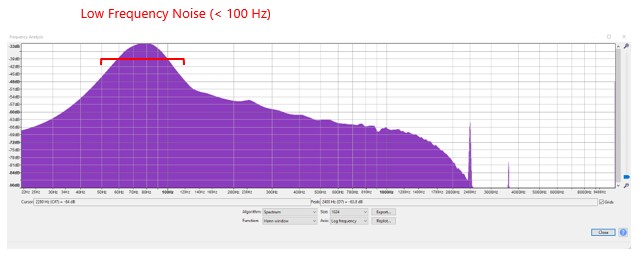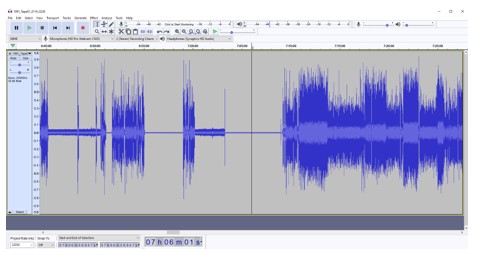
WASHINGTON STATE ARCHIVES: PROCESSING AND RESTORING LEGISLATIVE AUDIO RECORDINGS
Washington State Archives’ Legislative Audio Project team digitizes, converts, edits, and indexes audio from House Floor sessions, Senate Committee meetings, and other recordings associated with the state’s legislative history. This recorded media document events spanning over half a century and are available online at Washington State Archives – Digital Archives.
Consequently, recording technologies, as well as the quality of these recordings, vary greatly from year to year. For example, the majority of House Floor sessions from 1969 through 1996 were recorded using reel-to-reel tape. In addition to digitizing these aural documents, part of the Legislative Audio Project team’s work involves restorative editing and sound-processing. In some cases, only light editing is required.
With other recordings, however, tape degradation, background noise, and malfunctioning equipment sometimes compromise quality and intelligibility. In such cases, the team employs a variety of digital sound-processing techniques to enhance intelligibility of speech while maintaining the original media’s historic authenticity and character.
One of the most potent tools for audio restoration is spectral analysis. Just as sunlight contains multiple wavelengths of color, nearly every sound contains multiple frequencies. Like a sonic fingerprint, this collection of frequencies gives each sound a unique spectrum. Some of these frequencies constitute elements essential for accurately perceiving human speech, while other frequencies indicate extraneous noise and environmental artifacts.
In practice, spectral analysis software provides a visual snapshot of frequency content within a recording. This technique enables audio engineers to identify problematic frequencies, including hums, buzzes, and ringing tones introduced through noisy HVAC systems, electromagnetic interference, or faulty electrical components. Once identified, the team utilizes precise filtration to remove these unwanted frequencies from a recording while keeping critical components of the original audio intact.
To demonstrate, below is an excerpt of a House Floor recording from 1991. Notice the two sharp peaks at 2,400 and 3,600 hertz (cycles per second). In playback, these two prominent frequencies can be heard as a series of ringing tones. Their occurrence is likely the result of intermittent electrical or radio frequency (RF) interference. Both of these elements negatively affect intelligibility and can be removed or attenuated without affecting the integrity of the original recording.

The same spectral analysis reveals a region of low-frequency noise below 100 hertz. In playback, this sound is perceived as a low-frequency hum or rumble. These low tones may result from standing waves produced by air passing through ductwork. Likewise, lighting systems and other electrical devices running on alternating current (AC) may induce audible electrical interference covering a similar range.
In either case, these low-frequency artifacts can mask other essential frequencies, resulting in reduced intelligibility.[1] In practice, filtering frequencies below a certain threshold can help mitigate this effect.

Through spectral analysis, results of these procedures are evident to the eyes and ears. These tools and techniques in turn enable the team to combine the senses and restore essential elements from historic recordings.


As the Legislative Audio Project moves forward, the State Archives will share more of these methods and results.
[1] Huron, David. “Tone and Voice: A Derivation of the Rules of Voice-Leading from Perceptual Principles.” The Journal of the Acoustical Society of America. Volume 19, Issue 2. https://doi.org/10.1525/mp.2001.19.1.1